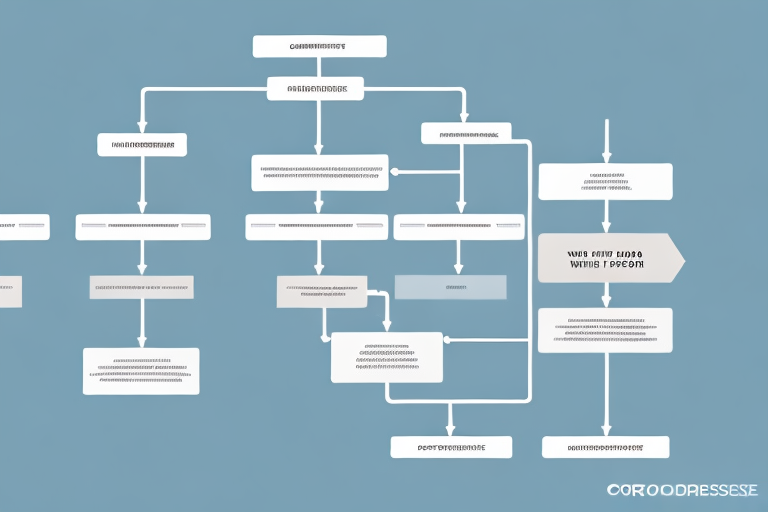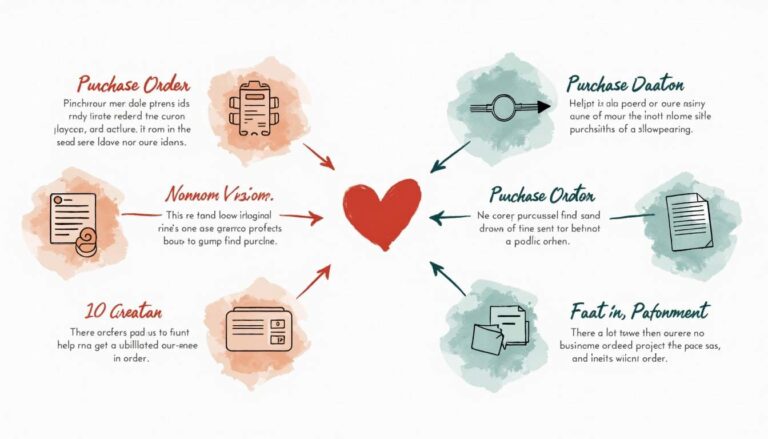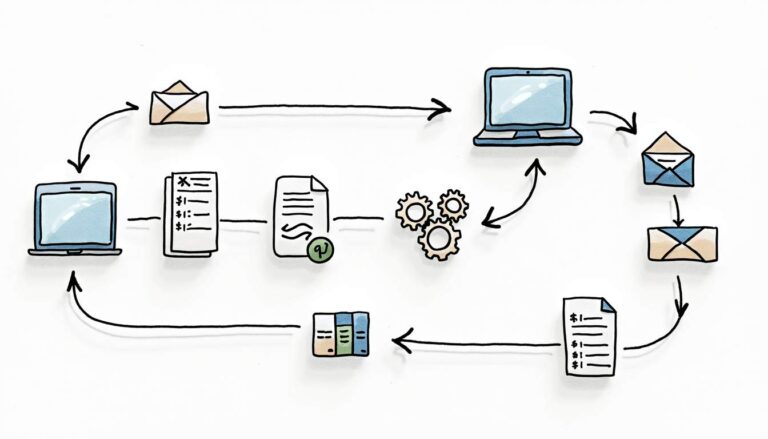Managing procurement efficiently is crucial to the success of any organization. Purchase orders play a critical role in procurement and are a primary means of communicating with suppliers. Purchase orders typically have several stages that they go through before being fully processed. It is essential to understand the different purchase order statuses to streamline the procurement process, enhance supplier communication and improve financial management. In this article, we will walk you through the importance of purchase order statuses, common purchase order elements, and each purchase order status in detail.
The Importance of Purchase Order Statuses
Purchase order statuses are an integral part of the procurement process. They help to ensure that items are ordered and received on schedule, processed properly, and paid for on time. In addition, they enable effective communication between the buyer and supplier at every stage of the transaction.
When a purchase order is issued, it is essential to track its progress through the procurement process. Purchase order statuses allow buyers to keep track of the different stages of the procurement process easily. This includes everything from when the order is received by the supplier, to when it is processed, shipped, and delivered.
Streamlining the Procurement Process
By understanding the different purchase order statuses and how to use them, organizations can streamline their procurement process, reduce errors, and facilitate cashflow management. Purchase order statuses allow organizations to automate procurement processes, making it more efficient and saving time and resources.
For instance, when a supplier receives a purchase order, they can verify the order details and begin to process it. As the purchase order progresses through each stage, the vendor can update the status to inform the buyer of any changes. This enables the buyer to prepare for the next stage of the procurement process and helps to ensure a smooth purchasing experience.
Enhancing Supplier Communication
Effective communication is vital to procurement, and purchase order statuses help to ensure that buyers and suppliers are always on the same page. By tracking the progress of a purchase order using different statuses, both buyers and suppliers can quickly identify and resolve issues that may arise in the procurement process. This can lead to better supplier relationships and improved supplier performance.
Purchase order statuses also enable suppliers to prepare for upcoming orders. They can quickly view upcoming orders and plan accordingly, ensuring that they can fulfill orders on time. This also allows suppliers to communicate any potential issues that may affect delivery times in advance.
Improving Financial Management
Purchase order statuses help organizations to manage their cash flow more effectively by enabling them to track the progress of a purchase order from beginning to end. By doing so, organizations can ensure they have sufficient funds available to pay suppliers when necessary. In addition, purchase order statuses can help to prevent duplicate payments or overpayments, ensuring that the correct amount is paid to suppliers.
Furthermore, purchase order statuses can help organizations to identify any potential issues that may affect their financial management. For instance, if a purchase order has been delayed, this may impact the organization’s ability to pay suppliers on time. By identifying such issues early, organizations can take appropriate action to mitigate any negative impact on their financial management.
In conclusion, purchase order statuses are an essential tool for organizations that want to streamline their procurement process, enhance supplier communication, and improve their financial management. By understanding the different purchase order statuses and how to use them, organizations can ensure that they receive the goods and services they need on time and at the right price.
Key Components of a Purchase Order
Before diving into the different purchase order statuses, it’s essential to understand the key elements of a purchase order. A purchase order is a document that a buyer sends to a seller to request goods or services. It typically includes the following information:
Purchase Order Number
This is a unique identifier that identifies the purchase order and should be referred to in all communications relating to the purchase order. The purchase order number is essential for tracking the order and ensuring that the correct items are delivered.
Vendor Information
This section includes the name, address, and contact details of the vendor who will be fulfilling the order. It is crucial to ensure that the vendor’s information is accurate and up-to-date to avoid any delays in delivery or payment.
Item Details and Pricing
This section includes a detailed list of the items being ordered, including the quantity, description, and price. It is essential to provide accurate and detailed information to ensure that the correct items are delivered. This section may also include any terms or conditions relating to the items being ordered, such as warranties or guarantees.
Payment and Delivery Terms
This section outlines the payment terms, such as the payment due date and any discounts that may apply. It also includes the delivery terms, such as the delivery date, delivery location, and any shipping or handling instructions. It is crucial to ensure that both the buyer and the seller agree on the payment and delivery terms before the order is placed to avoid any misunderstandings or disputes.
Additionally, some purchase orders may include other information, such as the buyer’s contact information, the date the purchase order was issued, and any special instructions or notes. It is important to provide as much information as possible to ensure that the order is fulfilled correctly and on time.
Common Purchase Order Statuses
When it comes to managing the procurement process, organizations use several common purchase order statuses to ensure seamless collaboration between buyers and suppliers. Understanding each status is crucial to ensure that the procurement process runs smoothly. Here are the most common purchase order statuses and what they mean:
Draft
A draft purchase order is one that has been created but has not yet been submitted to the vendor. Organizations may use draft purchase orders to review information, verify pricing, or obtain approvals before submitting the purchase order to the vendor. Draft purchase orders can help organizations catch errors or discrepancies before sending the order to the vendor.
Submitted
A purchase order that has been submitted is one that has been sent to the vendor but has not yet been approved or rejected. Once a purchase order has been submitted, the vendor can review the order and either approve or reject it. The submitted status indicates that the procurement process is in progress and that the vendor has been notified of the order.
Approved
A purchase order that has been approved has been accepted by the vendor, and the order is being processed. Goods or services will be delivered as agreed upon. The approved status indicates that the vendor has accepted the order and that the procurement process is moving forward.
Rejected
A purchase order that has been rejected is one that has been refused by the vendor. This may be due to pricing or availability issues, incorrect information, or an unwillingness to work with the buyer. The rejected status indicates that the procurement process has hit a roadblock and that the buyer may need to find a new vendor or renegotiate the terms of the purchase order.
Partially Fulfilled
A purchase order that has been partially fulfilled means that some of the items ordered have been received, but not all. The vendor may ship the remaining items at a later date. The partially fulfilled status indicates that the procurement process is still ongoing and that the buyer is waiting for the rest of the items to be delivered.
Fulfilled
A purchase order that has been fulfilled means that all items ordered have been received. The vendor has fulfilled the entire order, and the transaction is complete. The fulfilled status indicates that the procurement process has been successfully completed, and the buyer has received all items as agreed.
Closed
A purchase order that has been closed means that all items have been received, and all financial obligations have been fully accounted for. The closed status indicates that the procurement process has been completed, and the buyer has received all items and paid for them in full.
Understanding the various purchase order statuses is crucial for effective procurement management. By keeping track of the status of each purchase order, organizations can ensure that the procurement process runs smoothly and that goods and services are delivered as expected.
Conclusion
Purchase order statuses are a critical component of procurement management. Understanding the different purchase order statuses allows you to manage the procurement process more efficiently and effectively. By streamlining the procurement process, enhancing supplier communication, and improving financial management, organizations can achieve better supplier relationships, reduce errors, and save both time and resources.
If you are looking to further enhance your procurement cycle to bring efficiency and cut costs, download this whitepaper on purchasing automation to kick off your transformation.







